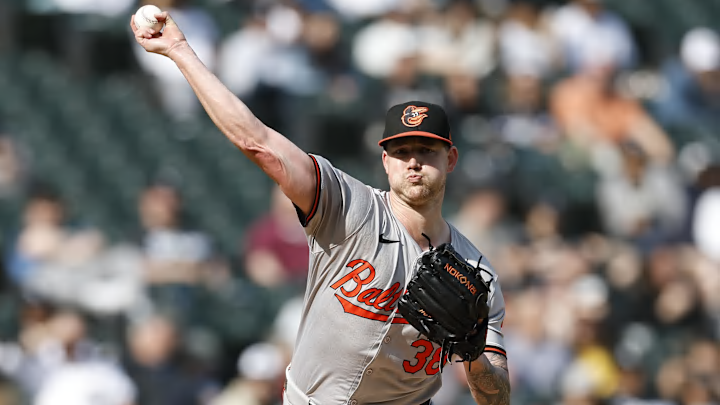One of the most impressive accomplishments that you can see on a baseball diamond is a no-hitter. Major League Baseball has been around for over 150 years, and in that time, approximately 240,000 games have been played. In all of that time, only 323 recorded no-hitters have been pitched, which is just over 0.1% of the total games played.
On Sunday, Kyle Bradish had a chance to pitch the 324th no-hitter against a stumbling Chicago White Sox team, but he was removed from the game after 7.0 innings. Bradish, who started the year on the IL after reporting to spring training with a sprained UCL, had thrown 103 pitches at the time he was pulled. I understand the reasons manager Brandon Hyde had for removing Bradish when he did, but the competitor in me doesn't like it.
Orioles failed Kyle Bradish during no-hit bid Sunday vs White Sox
Of the 323 no-hitters in history, only 20 of them have used a combination of pitchers (the Orioles have two of those), but a relatively recent change in baseball philosophy has caused a recent uptick in such games. Half of all the combined no-hitters in history have occurred in the last 10 years. Pitch counts have become one of the most important factors in a manager's decision to remove a starter, no matter how well he's pitching. But should one factor determine so much and override gut feeling?
Nolan Ryan once said in an interview, "Quality start? In those days, if I had pitched only six innings and gave up three runs, I had a bad outing and I was hacked off. And I can tell you what: my manager and general manager weren't happy either." Ryan also threw 235 pitches in a single game, once upon a time. It was his 17th start of the season, and he didn't miss a start after that. He went 15-10 in his 25 starts after throwing 235 pitches in that historic 13-inning performance in 1974. Ryan pitched fewer than 8.0 innings in just four of those 25 starts, and three times, he pitched either 10.0 or 11.0 innings.
Sure, Ryan was a freak of nature who could throw 100 MPH fastballs all day, everyday, but all pitchers used to pitch until they were no longer effective. Bradish began to have some control issues in the seventh inning, but he was clearly still effective. And you don't have to go that far back to see some examples of pitchers going far beyond their normal to finish no-hitters.
In 2010, Edwin Jackson threw 149 pitches in his no-hitter. Jackson was able to make 16 starts after his no-hitter, and was still good enough for the Chicago White Sox to trade for him during the season. In 2019, Mike Fiers threw a 131 pitches in his second career no-hitter. Fiers made 24 starts after that appearance, and went 12-1 after his no-hitter. Even earlier this season, Ronel Blanco threw a career high 105 pitches in his no-hitter. It was his first appearance of the season, and Blanco has not only gone on to continue to pitch at a high level, but he's 5-0 and has thrown over 100 pitches three more times, including a career high 107-pitch outing.
Hyde made a very tough decision to pull Bradish with history on the line. Given Bradish's injury earlier this season and the current state of the Orioles rotation, with starters John Means, Dean Kremer and Tyler Wells currently on the IL, Hyde decision was logical. But I'm sure Bradish knew what was on the line and wanted the opportunity to go back out there. There are no guarantees that even if Bradish had been given the chance to pitch the last two innings, he would have completed his no-hitter, but I would have liked to see him get the opportunity.
